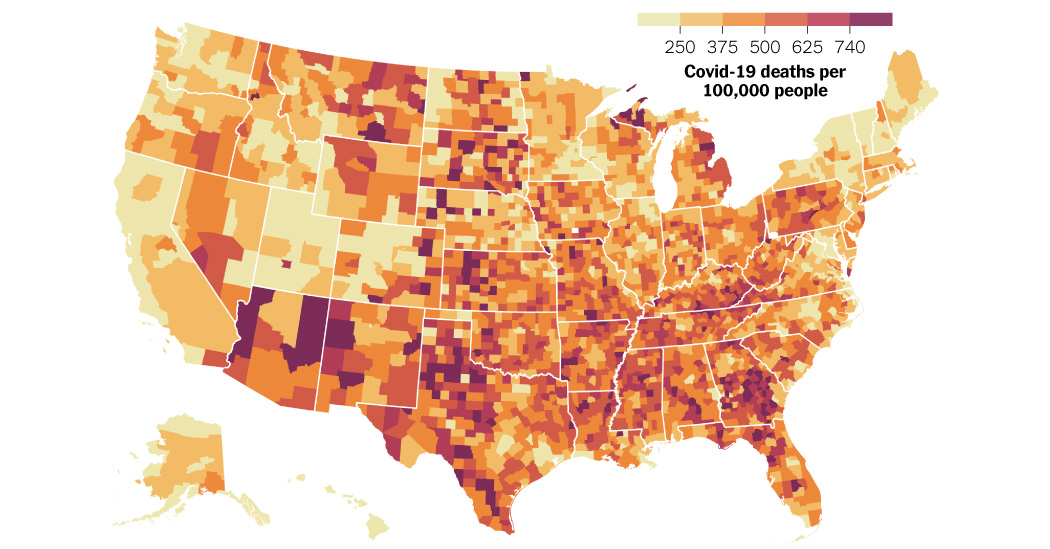California Salmon Stocks Are Crashing. A Fishing Ban Looks Certain.
This week, officials are expected to shut down all commercial and recreational salmon fishing off California for 2023. Much will be canceled off neighboring Oregon, too.
The reason: An alarming decline of fish stocks linked to the one-two punch of heavily engineered waterways and the supercharged heat and drought that come with climate change. There are new threats in the ocean, too, that are less understood but may be tied to global warming, according to researchers.
Scientists and fishers had been braced for bad numbers. Conditions were terrible a couple of years earlier, when the salmon were young and tiny in low, overheated creeks and rivers in California. But as the fish counts came in and the models spit out figures, the numbers were even more dismal than expected.
Of all the salmon in California, fall-run Chinook were the last ones robust enough for commercial fishing. But this year, fewer than 170,000 are expected to return to Central Valley rivers. That’s down from highs of over a million as recently as 1995.
While some dips are normal, this one is not.
“California salmon are in dire straits,” said Nate Mantua, a climate scientist who leads a team of salmon ecologists and biologists at National Oceanic and Atmospheric Association Fisheries in Santa Cruz, Calif.
The shutdown would mean higher prices and no fresh local salmon in California this year, though it probably would have little or no effect beyond the region.
Salmon are hardy survivors that have lived on Earth far longer than humans. They migrate hundreds of miles from the freshwater creeks where they hatch to the salty ocean and back again, leaping up waterfalls on the return trip. But what’s happening in California and Oregon, at the southern end of the range, scientists say, may be a harbinger of what’s to come in cooler waters farther north.
“Most of the salmon populations around the entire Pacific Rim have been doing very, very poorly,” Dr. Mantua said.
Pacific salmon will still be harvested off parts of Oregon, Washington and Alaska. It’s a complicated picture. Some varieties, like sockeye in Alaska’s Bristol Bay, are booming. But some Chinook stocks farther north have collapsed. Overall, scientists say, the picture is grim.
The assault on California salmon started two centuries ago. First fur traders wiped out beavers, whose dams created exceptional salmon habitat. Then came the Gold Rush, with hydraulic mining that choked creeks with gravel. Settlers drained and channelized the vast California delta and beyond. Next came dams, those engineering marvels that supplied water for a growing population and turned California into an agricultural powerhouse. In the process of all that, California lost about 90 percent of its wetlands.
The reshaping of water flows cut off salmon from the mountain rivers where they cooled off in summer and from the floodplains, rich with bugs, where they packed on weight in winter. The loss of these and other habitats means the fish are less able to cope with the latest attack: climate change, primarily caused by burning fossil fuels.
While recent rain and snow in California may help salmon rebound in three years, when the fish from this year’s eggs are ready to be harvested in the ocean, the intensity of the flooding comes with downsides. Raging torrents can scour the riverbeds where salmon lay their eggs.
People who rely on the fish are facing a painful reality.
Keith Parker, senior fisheries biologist for the Yurok Tribe, whose members fish along the Klamath River in California, called the situation tragic. “We lost our language,” Mr. Parker said. “We lost our religion for a long time. We lost our fish. So, we lost a lot.” When the fish are plentiful, Mr. Parker said, you can see a difference in people. “Our community is much happier, it’s healthier,” he said. “Mental health is better.”
The commercial salmon industry plans to request federal disaster relief. They don’t just blame the drought; they blame the way water is allocated for agriculture.
“There’s been an ongoing war for years over water for salmon,” said Glen Spain, executive director of the Pacific Coast Federation of Fishermen’s Associations. “Our industry requires that water be left in the river. Big Ag has been trying to get the water out of the river into the fields.”
It’s an increasingly contentious issue in California politics.
Many varieties of salmon are already listed as threatened or endangered in California, but a formidable hatchery effort in the Central Valley has kept fall-run Chinook, which return to California rivers in the autumn, strong enough for commercial and recreational fishing. But not this year.
Also known as king salmon, Chinook, with a high fat content and buttery taste, is generally the most valuable of Pacific salmon.
“It’s sad on two levels,” said Sarah Bates, who fishes for salmon out of San Francisco. “The loss of income and loss of work is upsetting, but the deeper understanding of what’s happening to our ecosystems and food resources is pretty devastating.”
Central Valley hatcheries raise about 30 million fall-run Chinook a year, which can be largely protected from poor conditions in the rivers. In bad years, young salmon are loaded into trucks and driven to the sea. But even those fish are disappearing.
Scientists worry that hatchery efforts are backfiring in part by weakening salmon’s genetic resilience. Once in the ocean, the fish face another slew of threats that are less understood.
Ocean forces were found to be a major factor in the only other total shutdowns of salmon fishing in California, which happened in 2008 and 2009. The ocean off California has, at times, already gotten as hot as climate change models predicted it would be at the end of the century, said Steve Lindley, fisheries ecology division director for NOAA Southwest Fisheries Science Center. What saves salmon is an upwelling of nutrient-rich, cold water along the coast. But that upwelling was delayed in the mid-2000s, leaving the salmon with little food. They either starved or remained so small that they were picked off by seabirds, researchers found.
Threats at sea are most likely playing a much smaller, but still notable, role in this year’s dismal numbers, scientists say. One possible factor: Booming anchovy populations. In recent years, salmon have made anchovies a higher percentage of their diet. But anchovies contain an enzyme that breaks down thiamine, or vitamin B1, and salmon are becoming thiamine deficient. (Scientists connected the dots when baby fish started swimming upside down and dying. Infusing hatchery water with thiamine set them right.)
What’s becoming increasingly clear, according to scientists at NOAA Fisheries, is that the models used to predict stocks and manage fishing aren’t working like they used to.
“We keep getting surprised, even though we’re trying to adjust expectations downward every year because of the previous surprises,” Dr. Lindley said. That makes it harder to set fishing seasons and ensure fishers don’t catch more than expected.
To make matters worse, he said, an El Niño pattern is on the horizon, which could make the cold stream of water along the coast disappear. “This is what really scares some of us,” Dr. Lindley said.
What gives Dr. Lindley and other scientists hope are efforts to fix the underlying causes of salmon declines rather than the symptoms.
Fossil fuel emissions must be addressed, scientists say. Meanwhile, restoring habitat lets salmon do what they’ve evolved to do: Offset risk by spreading it out over space and time. Even within a salmon species, different populations return to different parts of different rivers at different times of the year. Think of it like diversifying risk across an investment portfolio, said Daniel Schindler, a professor at the University of Washington who studies watersheds and fish.
“The best thing we can do is give those fish the best chance they have to figure it out evolutionarily,” Dr. Schindler said, which means giving them as many habitat options as possible.
So there was joy on the Klamath River last month as crews broke ground on a megaproject to remove four old hydroelectric dams, which will give salmon access to more than 400 miles of historic habitat, including so-called thermal refuges like cold springs.
“Even though it’s like the lowest salmon runs and it’s horrible, on the other side of the coin, it’s also one of the greatest years because in July the first dam is coming down,” said Mr. Parker of the Yurok tribe, which has been pushing for the project along with other tribes, the fishing industry and conservation groups.
Another bright spot is efforts in which salmon advocates are working with farmers to find win-win solutions, such as turning rice fields into temporary floodplains in the winter, when rain is more plentiful, and growing salmon on them. Research has shown the young fish can grow 10 times as big that way, feasting on a bug buffet that simply doesn’t exist in the faster-flowing rivers, which leaves them better equipped to survive their next stage of life in the ocean.
At the same time, the effort recharges groundwater and fertilizes the rice fields.
Much of the water conflict in California, which is often framed as farmers versus fish, is actually the result of systems built long ago, when we knew far less about how rivers work, said Jacob Katz, a senior scientist with California Trout, a nonprofit group focused on restoring California’s waterways.
“You get this idea that it’s an inevitable trade-off between agricultural production and wildlife production,” Dr. Katz said. “And what we see is that’s not the case, that there is an incredible amount of middle ground.”


